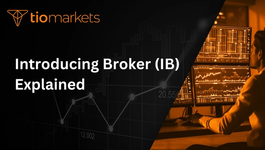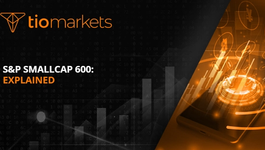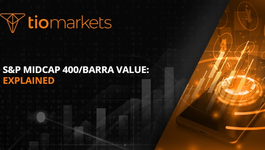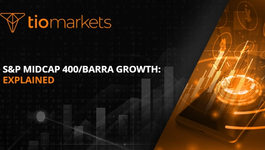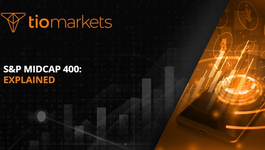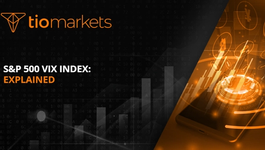Active trading: Explained | TIOmarkets
BY TIOmarkets
|June 28, 2024Active trading is a strategy that involves 'buying and selling' securities with the aim of profiting from short-term price movements. This strategy requires a high level of knowledge, understanding, and focus, as it involves making frequent trades, which could be daily or even hourly. This article will delve into the concept of active trading, its strategies, benefits, risks, and how it differs from other trading strategies.
Active trading is not for everyone. It requires a significant investment of time, and a deep understanding of the markets. Traders need to be able to interpret charts, understand technical indicators, and be comfortable with volatility. However, for those who are willing to put in the time and effort, active trading can be a profitable strategy.
Understanding Active Trading
Active trading is a strategy that requires a hands-on approach. It involves continuously monitoring the markets and making numerous trades each day. This is in contrast to passive trading strategies, such as buy-and-hold, where investors make fewer transactions with the expectation that their investments will grow over a long period.
Active traders seek to profit from short-term price fluctuations. They use a variety of strategies to try to predict market movements and take advantage of price changes. These strategies require a deep understanding of market trends and indicators, as well as the ability to react quickly to changes in the market.
Types of Active Trading
There are several types of active trading, including day trading, swing trading, and scalping. Day trading involves buying and selling securities within a single trading day. This means that all positions are closed before the market closes for the day. Day traders aim to profit from short-term price movements in highly liquid stocks or currencies.
Swing trading, on the other hand, involves holding positions for several days or weeks. Swing traders aim to profit from price swings in a trending market. They use technical analysis to identify trends and make trades based on these trends.
Scalping is another form of active trading, which involves making a large number of trades within a day, aiming to profit from small price changes. Scalpers may hold positions for only a few minutes or even seconds.
Tools for Active Trading
Active traders use a variety of tools to help them make trading decisions. These include technical analysis tools, such as charts and indicators, which help traders analyze market trends and patterns. They also use trading platforms that allow them to execute trades quickly and efficiently.
Another important tool for active traders is a trading plan. This is a detailed plan that outlines a trader's financial goals, risk tolerance, and trading strategies. A trading plan helps traders stay focused and disciplined, which is crucial for success in active trading.
Benefits of Active Trading
Active trading has several benefits. One of the main advantages is the potential for high returns. Because active traders make numerous trades, they have the opportunity to profit from even small price movements. This can result in higher returns compared to passive trading strategies.
Another benefit of active trading is the ability to manage risk. Active traders can use stop-loss orders and other risk management tools to limit their losses. This can be particularly beneficial in volatile markets.
Risks of Active Trading
While active trading can be profitable, it also comes with risks. One of the main risks is the potential for significant losses. Because active traders make numerous trades, they are exposed to the risk of multiple losses. Additionally, the cost of trading can add up, as each trade involves a commission or fee.
Another risk of active trading is the potential for emotional trading. Trading can be stressful, and it's easy to let emotions get in the way of rational decision-making. This can lead to poor trading decisions and losses.
Active Trading vs. Passive Trading
Active trading and passive trading are two different approaches to investing in the financial markets. Active trading involves making frequent trades in an attempt to outperform the market. Passive trading, on the other hand, involves buying and holding securities with the expectation that they will appreciate over time.
While active trading can potentially result in higher returns, it also involves more risk and requires more time and knowledge. Passive trading, on the other hand, is less risky and requires less time, but may result in lower returns over the short term.
Choosing the Right Strategy
Choosing between active trading and passive trading depends on several factors, including your financial goals, risk tolerance, and time commitment. If you're willing to put in the time and effort to learn about the markets and monitor your trades, active trading may be a good fit for you. However, if you prefer a more hands-off approach, passive trading may be a better option.
Regardless of the strategy you choose, it's important to have a clear plan and stick to it. This will help you stay focused and disciplined, which is crucial for success in trading.
Conclusion
Active trading is a hands-on approach to investing that involves making frequent trades in an attempt to profit from short-term price movements. While it can be profitable, it also involves risks and requires a significant investment of time and knowledge. Therefore, it's important to understand the ins and outs of active trading before getting started.
Whether you choose active trading or a more passive approach, the key to success is having a clear plan and staying disciplined. With the right knowledge and tools, you can make informed trading decisions and potentially achieve your financial goals.
Start Your Active Trading Journey with TIOmarkets
Ready to put your active trading plan into action? Join the 170,000+ traders in over 170 countries who have chosen TIOmarkets as their trusted forex broker. With our platform, you can trade over 300 instruments across 5 markets, including Forex, indices, stocks, commodities, and futures, all with low fees. Plus, enhance your trading skills with our comprehensive educational resources and step-by-step guides. Don't wait to take control of your financial future—Create a Trading Account today and start trading effectively!

Risk disclaimer: CFDs are complex instruments and come with a high risk of losing money rapidly due to leverage. You should consider whether you understand how CFDs work and whether you can afford to take the high risk of losing your money. Never deposit more than you are prepared to lose. Professional client’s losses can exceed their deposit. Please see our risk warning policy and seek independent professional advice if you do not fully understand. This information is not directed or intended for distribution to or use by residents of certain countries/jurisdictions including, but not limited to, USA & OFAC. The Company holds the right to alter the aforementioned list of countries at its own discretion.
Join us on social media

Behind every blog post lies the combined experience of the people working at TIOmarkets. We are a team of dedicated industry professionals and financial markets enthusiasts committed to providing you with trading education and financial markets commentary. Our goal is to help empower you with the knowledge you need to trade in the markets effectively.
